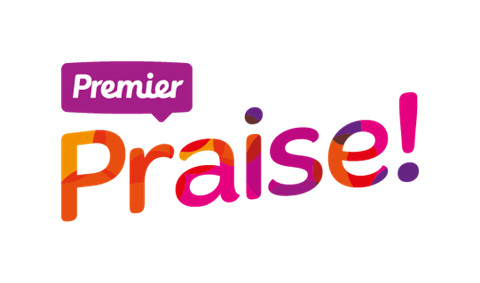When Tony Blair came to power in 1997, he said his priorities for office were “education, education, education”. Look at any newspaper today and you would have to agree that if nothing else, Blair has succeeded at the very least in putting education at the top of everyone’s agenda. In one of his first speeches after becoming the new PM, Gordon Brown said the agenda for change in schools should continue. Education has become one of the most hotly-debated topics in the country, whether in Parliament or at the dinner table. When David Cameron’s Conservatives announced a change in policy about grammar schools, the fallout lasted for weeks. We talk about which schools our politicians attended, and which they choose for their children - particularly if it’s a selective one.
Causing controversy?
While grammar schools have recently returned to the hot seat, the most contentious education issue in Britain today is the role of the faith school. It’s so emotive a topic that the smallest pronouncement will find a prominent place in the news.
For many within the Church, the issue may be a puzzling one. Reading media reports can leave you with a strong impression that any sort of faith-based education is intrinsically a ‘bad thing’ and that most people in the country are passionately against them. And yet, we know that the Church has been involved in education for hundreds of years; that it has often been a pioneer in bringing schools to the poor and the disadvantaged.
It was in the 1800s that Christian reformers and philanthropists established the foundation of the current British education system. By the time the state became involved in the process in 1902, the Victorian churches had established 17,000 schools. They have particularly left their legacy in primary education, where one in four are church schools.
Interestingly, the debate on faith-based education tends to leave primary schools on one side, and focus exclusively on secondary schools. Perhaps there is a tacit acceptance that if the Church was forced out of primary education, there would be a disastrous shortage of resources. So, what are faith schools, and why are they under attack?
Neither question has a simple answer, but here is an attempt at one. A faith school, in its strictest sense, is one which selects students on the grounds of their faith or the faith of their parents. When a faith school is part of the state system, the question is this: should a school that receives funding and support from the state be allowed to discriminate in its selection process against those of alternative, or no faith?
It is not only ‘faith schools’ that are at issue. State schools that do not select on the basis of faith may nevertheless have religious foundations voluntary-aided schools, for instance, are often run by a faith-based governing body but open to all, while the new city academies introduced by the government can be sponsored and managed by faith groups.
In these cases, it is not selection that worries the critics - it is proselytising. Secularists and humanists are among those who have argued loudly against single faith schools. They have two main objections: that faith schools are divisive, discouraging social cohesion; and that publicly-funded schools should not be allowed to influence children’s religious beliefs. Meanwhile, the controversial teaching of creationism at some American church schools has worried educationalists that the teaching of science and other subjects will be compromised by religious views. The danger at present is that the arguments against faith schools are so loud, and so often repeated, that instead of analysing them, it’s easy to accept them as fact.?
A Christ-centred curriculum?
St Mary Redcliffe and Temple school is not easy to spot. Situated in the deprived area of Redcliffe, a little way from Bristol city centre, it is hidden by the large tower blocks that surround it. The entrance is low-key. Once inside, you can hear the unmistakeable buzz of students heading for their lunch break. On the notice board in the foyer is a poster, saying: ‘Live as if Christ died yesterday, rose today and will come again tomorrow’.
In another school, the message might seem cryptic. But to come to St Mary Redcliffe, you need a minister’s letter confirming your church attendance for the previous three years, and the overwhelming majority of the pupils are from church-going backgrounds. This is a school that is unapologetic about its faith. Here, the question for assembly is not whether to include an act of worship, but which style of worship that might be - choral, gospel or rap?
According to Elisabeth Gilpin, its head teacher, this is not your typical Church of England school, and she is proud of that. The school was founded in 1571, in the Lady’s chapel of St Mary Redcliffe church, a beautiful gothic building which stands in stark contrast to the concrete social housing around it. But while the school maintains a close relationship with the traditional Anglican church, its students are drawn from a wide range of denominations. “What’s special about this school is that it takes from every postcode in the city,” says Gilpin. “You’ve got a mix of social backgrounds and a mix of children with different spiritual experience from eucharistic Church of England to Pentecostal charismatic churches. It means that there’s an openness, a willingness to engage because there’s not one way of doing worship or reflecting on your faith.” Almost one in five of the school’s intake is black or ethnic minority; there is no suggestion as you walk around the corridors that this is a school exclusively for white, middle class children. “It’s not monocultural,” says Gilpin, “which is the danger for some Church of England schools.” ??For Christian parents, this school seems to offer every resource they could ask for their children. Its academic record is excellent; 84% of pupils achieve five A to C grades at GCSE compared to the national average of 57%, and an even poorer Bristol average of 43%. The atmosphere is friendly and encouraging; the staff have a reputation for the quality of their pastoral care. Christian values aren’t just an add-on to the school; they’re part of the learning programme, which emphasises, among other things, self-value, respect for others, forgiveness, justice and truth. The sixth form includes a prayer and meeting room named ‘Room 42’ after Douglas Adams’ answer to the question of Life, The Universe, And Everything. Designed by the students themselves, it is used for everything from quiet reflection to Amnesty International meetings to noisy worship sessions.
Faith-based selection?
For some, St Mary Redcliffe could raise objections. It does, openly, select on the basis of faith for its intake. Sixteen places per year are offered to children from the local community - whether they have a faith or not – but a large number of students and staff travel significant distances to school, including some from 25 miles away. This is not a school that particularly serves the local community. Gilpin also admits that with the school’s academic success, parents will become church-goers just to get their children a place here. “I’m fine about that,” she says, “so long as they’re willing to engage with what we’re doing. You’d hope that during those years something of God’s love touches them through their local church.”
Meanwhile, only four places per year are open to pupils of other faiths, mainly Muslims, which, in an intake of more than 200, looks tokenistic. When Gilpin points out that these places are always oversubscribed, it raises the significant question: should a school teaching about God’s love for all be an exclusive club that only other Christians can join? It’s not only non-Christians who oppose selection of this kind - some Christians also feel that it is not in keeping with the inclusive person of Jesus. Last year, both the Church of England and the Catholic Church agreed that in the interests of promoting social cohesion, up to 25% of their school intake should be from children of alternative or no faith. But this voluntary agreement, undertaken with the government, has failed to allay anxieties.
Christ-centred values?
Forty minutes down the road, in Gloucester, a very different Church of England school has recently opened. Bishops’ College is a new school in an old building. The corridors are freshly repainted; its IT suite gleams and blinks with top of the range PCs. It is after school hours, but three girls are learning a dance routine in the school’s smartly refurbished hall, paid for with a grant from the local authority. One of the reasons that faith schools are getting so much attention is because of the Church of England’s pledge in 2001 to increase its provision of secondary schools. The Church was inspired to action by the Dearing Report, commissioned by the Archbishop of Canterbury, which criticised its ‘patchy’ provision of secondary education and recommended opening 100 new schools, with a particular aim to provide for children in deprived and inner-city areas. With the help of increased government subsidy for religious schools, the Church of England has taken up the challenge and in the last six years opened or expanded 33 secondary schools, with dozens more in the pipeline.
As it follows the Dearing Report’s suggestions, the Church is proving particularly helpful to local authorities in areas where schools are struggling; many local dioceses have found themselves ideally suited to offer a rescue package. That’s exactly what happened to Oxstalls School, now Bishops College, in September last year.
Oxstalls struggled to attract pupils of even average ability. Parents avoided sending their children to the school; many of those children who did attend were (and still are) from troubled backgrounds, or had been excluded from other schools. “In one sense this is the archetypal ‘Dearing school’,” says head teacher Martin Spoor. “A school with a significant element of social challenge, and a poor profile, which could benefit from a fresh start.”
As it has taken on both the pupils and the staff of a previous school, being a Christian school means something different to, say, St Mary Redcliffe and Temple. “We don’t have a Christian staff or student body,” says Spoor, “and the idea of Christianity has some resonance in the community, but not a very articulate one. For me, it’s about our values as an institution: being honourable and fair and transparent in the way we deal with things, being inclusive, being socially responsible. So, for instance, we’ve cut our exclusion rate significantly because we do believe as Christians we should go the extra mile. We try not to pass judgement - to criticise the sin, not the sinner. And we’re trying to look at green issues - I’m hoping to install a wind turbine and serve fairtrade food in the canteen.” For both pupils and parents of the former Oxstalls School, the idea of becoming a faith school seems to have met no resistance. “In fact,” says Spoor, “the pupils responded very well to having a new school because they associate it with an investment in them.
Giving it a new identity, giving the children a new uniform and changing the appearance of the school has been well received at quite a deep level.” From staff, there have been “a few questions about what it means: the science department were very worried that I’d be a hardline creationist. They said ‘can we still teach evolution?’ I said, ‘I’d be very worried if you didn’t.’ You have to give people an assurance that the Church is not a manipulative organisation.”
The Church and education?
While Church of England schools are often criticised for favouring a white middle class elite, Spoor is working with the most disadvantaged children in the area, and his immediate aim is to build on the goodwill of its opening and encourage more applicants - at present it fills only 100 of its 170 places a year. “Those who want to see Church of England schools as divisive and racist have had some ammunition in the past, but I don’t think they’d find any here. If we want to talk about integration let’s talk about integration - the real issue of divisiveness in education today is that of class, not religion.”
Gloucester diocese has 117 Church of England primary schools, but Bishops College was the first secondary school it has ever opened and it is excited about the school’s future. Phil Metcalf, director of education for the diocese, says churches should not be apologetic about their role in education. “The reason why we’ve got the schools we have now,” says Metcalf, “is that we have put millions of pounds into education over the last few decades. I would be sorry if the Church ever withdrew from education because it’s withdrawn from so many other things. We want to continue to contribute to the common good in the way that we’ve been doing so in this diocese since 1694. That’s a very long history and I think we should be very proud of our heritage.”
Metcalf considers that the arguments against faith schools ignore the Judeo- Christian tradition that permeates Britain’s history, laws and its values.
“Why do we suddenly want to throw that out for what is unproven?” asks Metcalf. “These values have seen off many other sets of values. If you look at the census, 72% of British people say they’re Christian - often meaning that they have been baptised into the Church of England. Yes, you can call it a default position, but even so the default position is not the secular one. The Church should be able to make its case alongside secular or humanist or atheist views.”


























